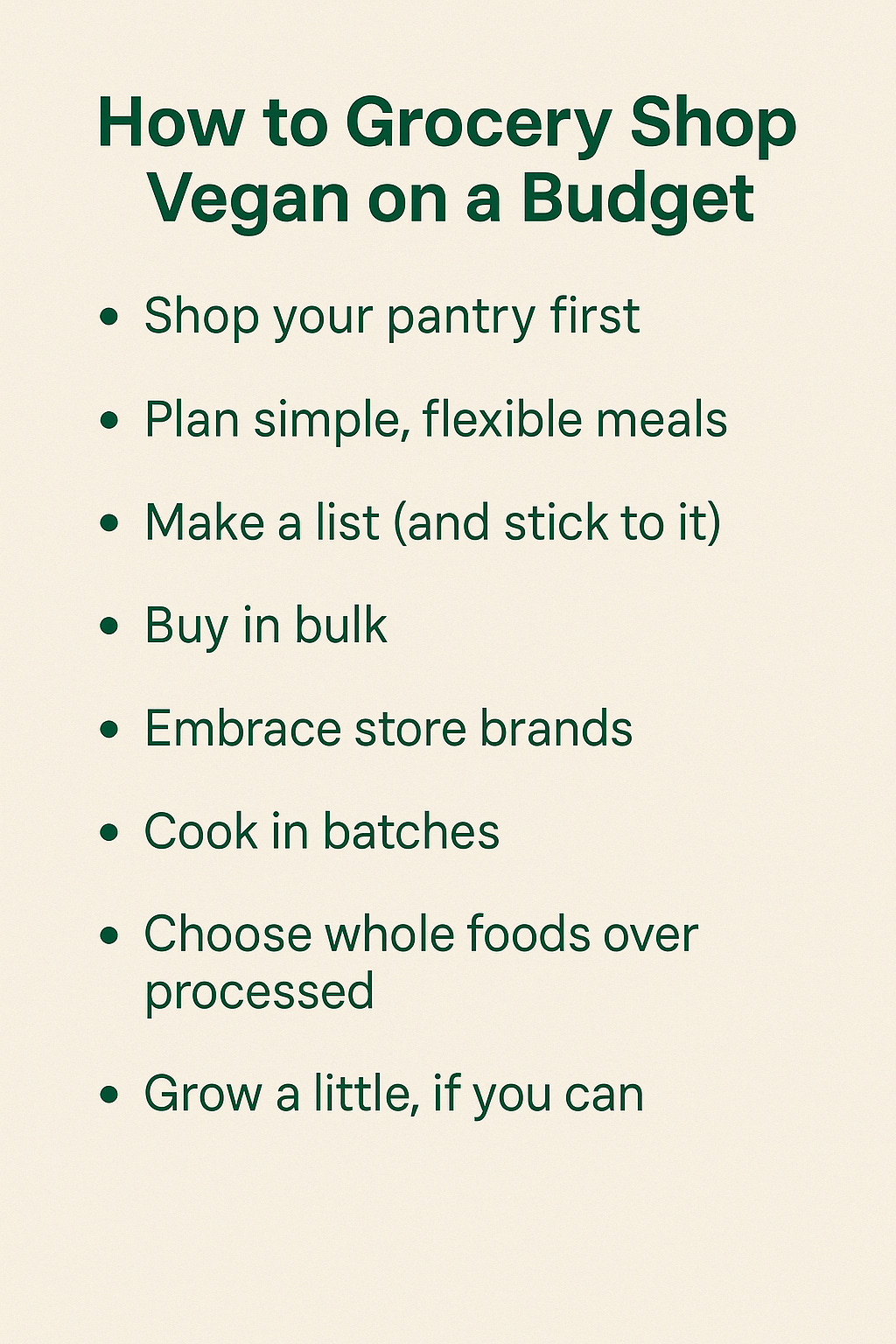Eating vegan is often associated with wellness, ethics, and environmental care, but not always with affordability. Many people still believe that plant-based eating means shelling out big bucks at specialty stores for pricey vegan cheese or lab-grown protein substitutes. The truth is far more empowering: a healthy, delicious, and entirely plant-based diet can be achieved on a tight budget. In fact, many of the most nutrient-rich staples, like beans, rice, lentils, and seasonal produce, are among the most affordable items in any grocery store.
‘‘Plant-based eating is not expensive when you focus on whole foods, plan ahead, and skip the hype. Beans, grains, and seasonal produce can nourish you fully without draining your wallet. Smart vegan shopping is not just possible, it is powerful.’’
Our new guide aims to dispel myths and arm shoppers with realistic tools to maintain a vegan lifestyle without breaking the bank. Whether you're new to plant-based eating or a long-time vegan looking to tighten your grocery bill, this article offers a breakdown of that guide’s best advice, along with a few additional tips from seasoned plant-based advocates.
Why Plant-Based Can Be Affordable
First, let’s challenge the common misconception: a vegan diet doesn’t have to mean expensive vegan meats, superfoods, or boutique brands. In fact, when built around whole, unprocessed foods, plant-based eating is often significantly cheaper than omnivorous diets.
Here’s why:
Staple foods are cheap. Beans, lentils, oats, rice, pasta, and canned tomatoes form the base of countless vegan meals and cost just pennies per serving.
No meat, dairy, or eggs. Animal products tend to be the most expensive items in the cart. Cutting them out automatically brings your total down.
Less processed food. A whole-food, plant-based diet means skipping convenience foods, which carry high markups.
The real budget-buster isn't veganism—it’s poor planning. This guide helps you turn planning into power.
If you are enjoying this article, consider supporting our work by becoming a paid subscriber to The Vegan's Voice. Your support helps us share more resources, recipes, and inspiration for compassionate living.
The Budget Vegan's Shopping Blueprint
Here’s how to build a smart, affordable grocery routine as a vegan.
Shop Your Pantry First
Before you make a list or head to the store, check your shelves. What dried beans, grains, or sauces do you already have? Can you build meals around those before buying new items?
Plan Simple, Flexible Meals
Rather than aiming for elaborate recipes, focus on 5 to 10 flexible meal templates you can rotate based on what's on sale or in season.
Make a Realistic List (and Stick to It)
Impulse buys—vegan or not—are budget killers. Stick to your plan and avoid distractions.
Buy in Bulk
Beans, oats, rice, lentils, and spices cost less when bought in larger quantities—especially in stores with bulk bins.
Embrace Store Brands
Skip expensive brand names in favor of store-label plant milk, pasta, or canned goods.
Cook in Batches
Meal prep a few base meals each week. This saves time, prevents waste, and reduces the need for takeout.
Choose Whole Foods Over Processed
Plant-based eating doesn’t mean fake meat at every meal. Whole grains, legumes, and vegetables are healthier and cheaper.
Grow a Little, If You Can
Herbs, scallions, and leafy greens can often be grown indoors or from scraps—saving you dollars and adding freshness.
Best Budget-Friendly Vegan Staples
Here are some of the most affordable and versatile plant-based staples to always keep on hand:
Dry goods: lentils, beans, rice, oats, pasta
Canned goods: tomatoes, beans, corn
Produce: carrots, onions, cabbage, bananas, apples
Frozen: broccoli, mixed vegetables, edamame
Refrigerated: tofu, store-brand plant milk
Pantry helpers: soy sauce, mustard, nutritional yeast, vinegar, spices
Your Handy Shopping Companion
Use this to guide your next shopping trip and avoid overspending. (right click to save image or print)
Save More with These Smart Strategies
Even with the right foods, how you shop matters. Here are six strategies that make a big difference:
Shop with a list and don’t deviate.
Buy in bulk when possible.
Use store apps or weekly flyers to track sales.
Cook from scratch—it’s cheaper and healthier.
Avoid vegan junk food except as an occasional treat.
Freeze extras to avoid spoilage and stretch your meals.
When to Splurge (And When Not To)
Splurge on:
High-quality olive oil
Good spices
Nutritional yeast
Your favorite plant milk
Skip or limit:
Gourmet vegan cheeses
Pre-made mock meats
Trendy snacks with low nutritional value
Final Thoughts
A vegan diet on a budget isn’t about going without—it’s about getting smart. Prioritize whole, nutrient-dense foods, plan ahead, and shop with intention. You’ll eat better, spend less, and align your purchases with your values.
Remember, every dollar you spend is a vote for the kind of world you want. Why not vote for health, compassion, and sustainability?
Further Reading
📘 Eat Well on $4/Day: Good and Cheap by Leanne Brown
This free, downloadable cookbook is filled with simple, adaptable recipes for anyone trying to eat well on a limited income. Most recipes are easily made vegan.






